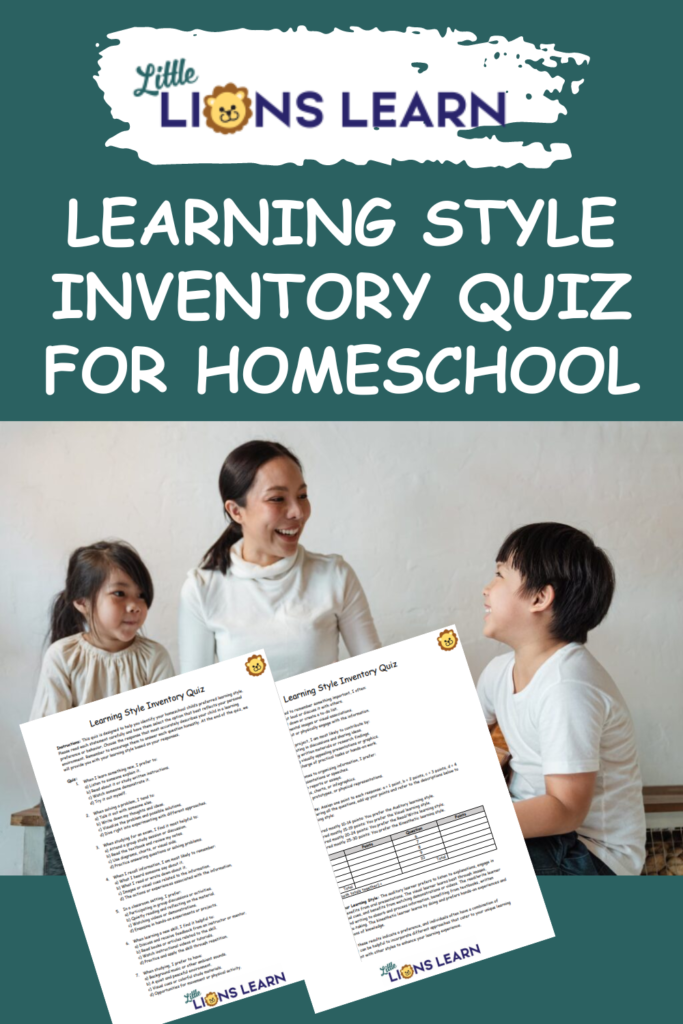How to Tailor Homeschool Lessons for Different Learning Styles
Introduction
It can be important for homeschool moms to understand how their children learn best. Learning about the diverse learning styles of students is essential for effective teaching and learning. Each individual has their own unique preferences and strengths when it comes to absorbing and processing information. Four commonly recognized learning styles are auditory, visual, read/write, and kinesthetic. In this blog post, we will delve into each learning style and provide examples of how to tailor homeschool lessons for different learning styles, ensuring a well-rounded and engaging learning experience for students.
Auditory Learners
Auditory learners grasp information most effectively through listening, engaging in discussions, and benefiting from oral presentations. They thrive in environments where verbal communication plays a significant role. Here are a few homeschool activities that can support auditory learners:
a) Audiobooks and Podcasts: Provide access to educational audiobooks and podcasts covering various subjects. Encourage students to actively listen and take notes while engaging in discussions about the content.
b) Oral Presentations: Encourage students to give presentations on topics they have studied, allowing them to consolidate their understanding while enhancing their public speaking skills.
c) Debate Sessions: Organize debates on relevant topics, allowing auditory learners to actively participate and present their ideas while refining their critical thinking and persuasion abilities.
Visual Learners
Visual learners comprehend information best when presented through visual aids, images, diagrams, and videos. They have a keen sense of observation and can make connections through visual cues. Consider the following homeschool activities for visual learners:
a) Educational Videos and Documentaries: Curate a collection of educational videos and documentaries that align with the curriculum. Encourage students to watch them and provide written or verbal summaries to enhance comprehension.
b) Infographics and Diagrams: Provide visual representations of complex concepts through infographics and diagrams. Ask visual learners to create their own visual summaries or mind maps to reinforce understanding.
c) Virtual Field Trips: Utilize technology to take virtual field trips to museums, historical sites, or natural wonders. Visual learners can explore and absorb information through interactive virtual experiences.
Read/Write Learners
Read/write learners absorb and process information most effectively through reading, writing, and note-taking. They prefer textual information and engage well with written materials. Consider incorporating the following activities for read/write learners:
a) Reading Assignments: Assign textbooks, articles, and novels relevant to the curriculum, allowing students to read and summarize the key points in their own words. Encourage them to create outlines or mind maps to organize their thoughts.
b) Journaling: Encourage students to maintain journals or reflective diaries, where they can write about their learning experiences, thoughts, and insights. This activity helps reinforce understanding and fosters critical thinking.
c) Note-Taking and Study Guides: Teach students effective note-taking strategies and provide study guides. Students can create their own comprehensive notes while studying, reinforcing their understanding of the material.
Kinesthetic Learners
Kinesthetic learners thrive in hands-on experiences and practical applications of knowledge. They learn best through physical activities and require opportunities for movement and tactile engagement. Consider the following homeschool activities for kinesthetic learners:
a) Science Experiments: Engage kinesthetic learners in science experiments, where they can actively participate, manipulate materials, and observe outcomes. This hands-on approach reinforces understanding and makes learning memorable.
b) Role-Playing and Simulations: Create scenarios or historical reenactments where kinesthetic learners can step into different roles and engage in hands-on learning experiences. This activity fosters empathy, critical thinking, and problem-solving skills.
c) Outdoor Exploration: Take learning outside the confines of the home by organizing nature walks, scavenger hunts, or gardening activities. Kinesthetic learners can explore and learn from their surroundings while incorporating movement and sensory experiences.
Conclusion
Recognizing and catering to different learning styles is crucial for effective homeschooling. By tailoring activities to the auditory, visual, read/write, and kinesthetic preferences of learners, parents and educators can create engaging and personalized learning experiences. Integrating diverse activities that cater to each learning style helps students absorb, process, and retain information more effectively, promoting a deeper understanding of the subjects they study.

